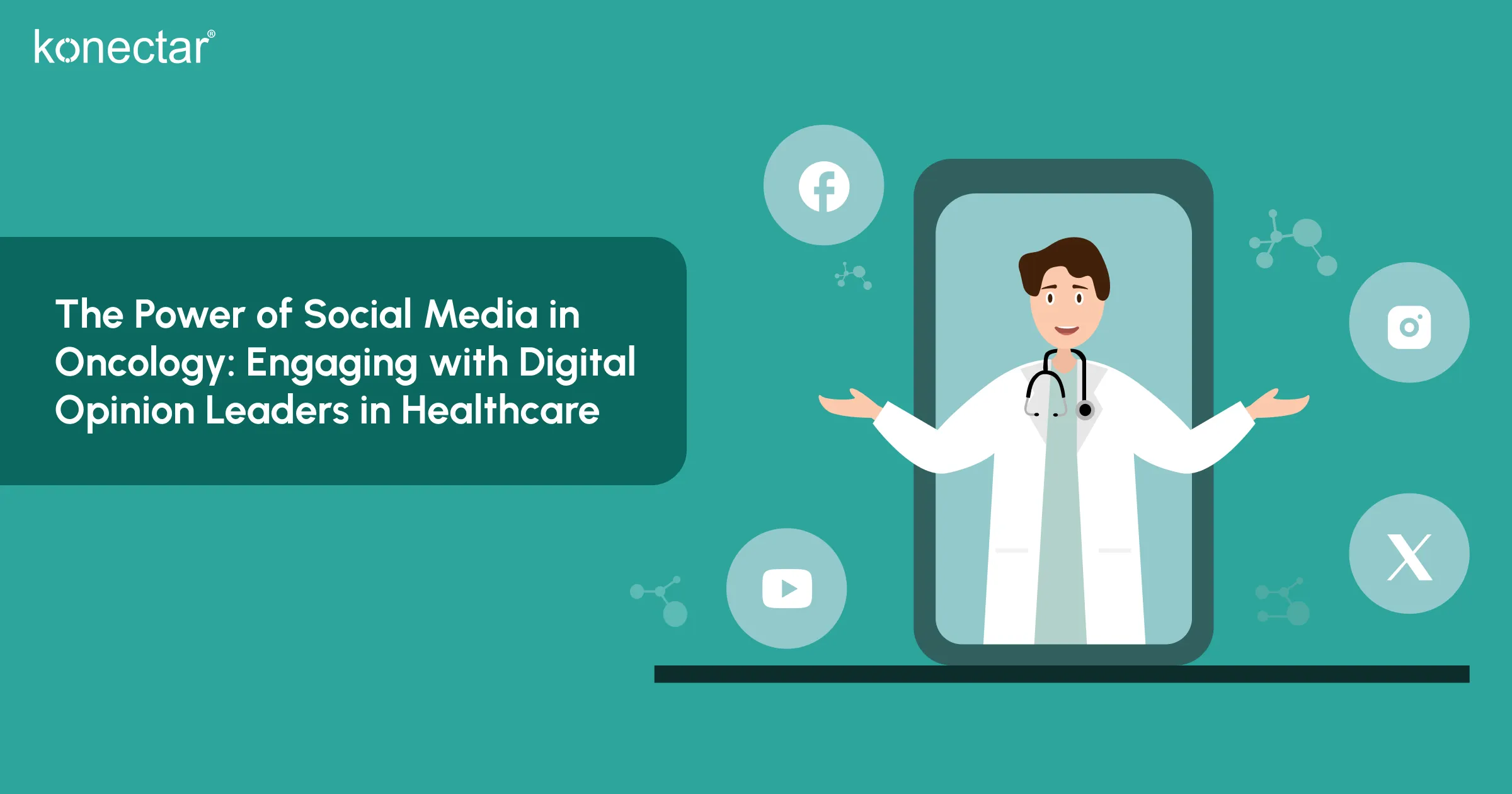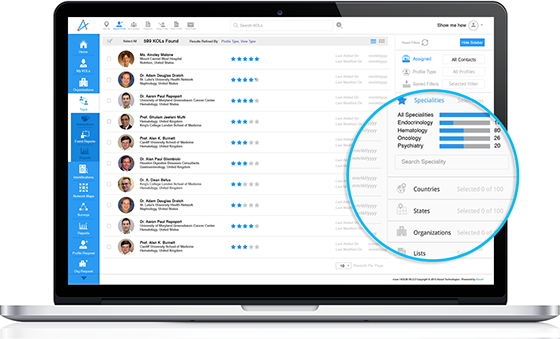16-05-2025
The Power of Social Media in Oncology: Engaging with Digital Opinion Leaders in Healthcare

Oncology communication has undergone a significant transformation in the digital age. Knowledge no longer circulates only at conferences or in journals. It now spreads through social media platforms on posts and comment threads.
Digital Opinion Leaders in Healthcare are changing how we share and discuss clinical knowledge. Oncologists, researchers, and other healthcare professionals (HCPs) share insights on social media platforms. They discuss new data and collaborate across fields.
In this article:
- The Rise of Digital Opinion Leaders in Healthcare
- Why Social Media Matters in Oncology
- Best Practices for Engaging DOLs
- DOLs as a Strategic Asset
- Key Takeaways for Pharma Teams
- FAQs
The Rise of Digital Opinion Leaders in Healthcare
Traditional gatekeepers of medical discourse, peer-reviewed publications, institutional lectures, and congresses, still play a critical role. However, they are no longer the sole source of authority. Digital opinion leaders in healthcare have become essential figures. They share expert insights with wider audiences through social media in oncology.
With both clinical credibility and digital fluency, DOLs interpret and contextualize complex data in real time. This capability is key to navigating digital engagement in healthcare, bridging the gap between information overload and actionable knowledge.
Peer Translators, Not Just Amplifiers
DOLs do more than amplify—they translate. Their strength lies in curating content that resonates with professional peers, especially when time and clarity are limited. They are strong medical thought leaders online. They often simplify complex research into clear, practical points that help clinical decisions.
Congress Coverage in Real Time
DOLs bring timely access to critical data as it’s being presented, especially during major conferences. This approach accelerates professional knowledge exchange, ensuring that critical developments reach a broader audience beyond the event floor.
Unscripted Voices
One of the most engaging aspects of DOL content is its authenticity. Unfiltered, real-time reactions, informal insights, and open dialogue make their communication more approachable than traditional channels.
This authenticity supports trust and credibility in healthcare social media strategy and encourages broader participation in meaningful, digital oncology conversations.
Why Social Media Matters in Oncology
Speed of Diffusion
Social media enables rapid sharing of research updates, treatment innovations, and expert perspectives, often within minutes of publication or presentation. This speed supports quicker knowledge transfer and potentially more responsive care strategies.
Broader Reach
Social platforms now break down geographic and institutional barriers, allowing medical professional networking online to flourish. From specialists in leading hospitals to early-career oncologists in underserved areas, critical insights can now travel across borders.
Trust & Credibility
DOLs’ personal tone and clear context make their content feel more relatable and grounded. Unlike polished corporate communication, these unscripted messages foster a sense of connection. This trust is foundational to any healthcare social media strategy.
Best Practices for Engaging DOLs
Avoiding Vanity Metrics
It’s easy to be drawn to follower counts, but pharma teams should focus on depth over reach. The goal is to assess the quality of engagement. Does the DOL’s audience align with specific oncology influencers' segments that matter to their brand?
Ensure Alignment with Strategic Objectives
Successful DOL partnerships start with clarity. DOLs should be chosen to support a medical education program or to raise awareness about a treatment area. This ensures compliance, consistency, and impact.
Use DOLs to Reach Niche, High-Impact Audiences
DOLs offer a unique advantage: the ability to influence specific subsets of the medical community. It can be rare oncology specializations or patient-focused groups involved in online patient advocacy. DOLs can help pharma teams deliver personalized messages with greater precision, maximizing both relevance and ROI.
DOLs as a Strategic Asset
When approached thoughtfully, digital opinion leaders in healthcare become more than communication partners—they become strategic assets. Their role in reaching specific audiences helps pharma teams create important conversations. This builds trust and supports a patient-centered care model that puts real-world needs first.
Instead of focusing on short-term campaigns, pharma teams should invest in long-term, ethical DOL relationships. These relationships should be based on shared goals and a commitment to patient care. In doing so, DOL engagement evolves into a critical element of modern healthcare social media strategy.
Key Takeaways for Pharma Teams
Prioritize relevance and engagement over superficial metrics when selecting DOLs.
Align DOL strategy with overarching medical and business goals for consistency and compliance.
Use DOLs to deliver tailored content to specialized or hard-to-reach oncology communities.
Invest in sustained, trust-based partnerships to unlock long-term strategic value.
FAQs
- What is the difference between a Digital Opinion Leader (DOL) and a Key Opinion Leader (KOL)?
KOLs typically influence through traditional academic and clinical channels (e.g., publications, conferences). DOLs extend this influence into digital platforms.
- How can pharma teams identify the right DOLs for their therapeutic area?
Teams should focus on clinical relevance, digital presence, and audience engagement, not just follower count.
- What types of content or campaigns work best with DOLs?
Educational programs and live coverage of congress events are good for DOL engagement. Updates on products or research should be shared ethically and legally. Disease awareness campaigns are also effective.





